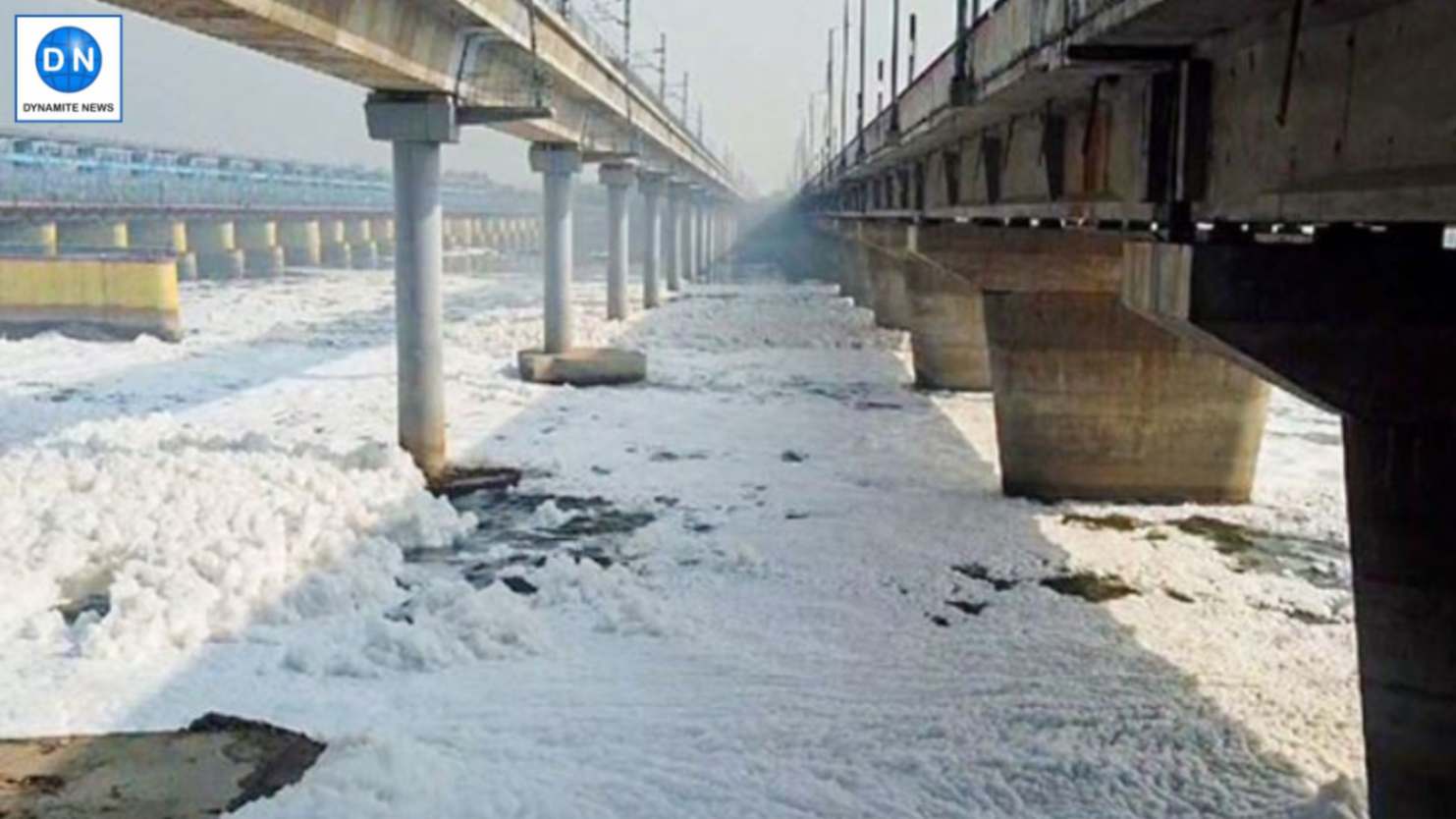
New Delhi: Experts have raised concerns over the toxic white froth in the Yamuna River, stating that it contains harmful organic matter which releases volatile gases directly into the atmosphere.
The effect of froath
Professor Sachchida Nand Tripathi, Dean of the Kotak School of Sustainability at the Indian Institute of Technology, Kanpur, said, "The effect of froth on the Yamuna River is dangerous.
The frequent occurrence of froth is primarily due to the large amounts of surfactants from soap, detergents, and other pollutants in untreated wastewater flowing into the river."
Stabilising the froth
"After the monsoon, the stable atmosphere and rising temperatures create ideal conditions for froth formation. Later, in October, when temperatures drop, it helps stabilise the froth.
However, this froth contains harmful organic matter that releases volatile gases directly into the atmosphere.
Organic gases become precursors
The partitioning of froth also releases volatile organic gases and semi-volatile organic compounds. These organic gases become precursors to secondary organic particulate matter," he added.
Also Read |
Delhi: Toxic foam surfaces in Yamuna River near Kalindi Kunj
He further stated that the froth also makes the water unhealthy for aquatic life.
"Froth can kill healthy algae, and fish, and other aquatic organisms can die because of it. It also leads to a reduction in dissolved oxygen (DO), which makes the water unhealthy for aquatic life. All in all, it's detrimental to the environment," he told
Government should increase wastewater treatment capacity
Professor Tripathi suggested that the government should increase wastewater treatment capacity, prevent untreated waste from flowing into the Yamuna, and regulate industrial waste disposal to tackle the problem of toxic white foam in the river.
"To combat the problem of froth in the Yamuna, the government needs to increase its wastewater treatment capacity. Secondly, efforts should be made to ensure that no untreated waste enters the river. If any activity is taking place along the banks, awareness must be raised.
Regulate industrial waste disposal
Thirdly, there is a need to regulate industrial waste disposal through the use of technology," he told.
An analysis of the Yamuna's water quality, published by Sharma, showed that organic pollution, particularly from industrial and agricultural runoff, plays a significant role in the frothing problem by promoting microbial degradation and gas production.
Research indicates that organic compounds in polluted water can undergo phase partitioning between water and air, potentially forming secondary organic aerosols (SOAs) when volatile organic compounds (VOCs) react with atmospheric oxidants.
Also Read |
Delhi: Air quality dips to 'poor', smog develops
Partitioning is influenced by factors
This partitioning is influenced by factors such as temperature, humidity, and the composition of organic matter in the water.
In conditions with high levels of pollutants and surfactants, as seen in the Yamuna River, the potential for organic material to transfer into the air increases.
Studies have shown that the presence of water content and organic species in the liquid phase can enhance SOA formation by increasing the partitioning of volatile organic compounds into the air. This process is especially significant in urban areas with heavy pollution, similar to the conditions in the Yamuna River. (with Agency inputs)







